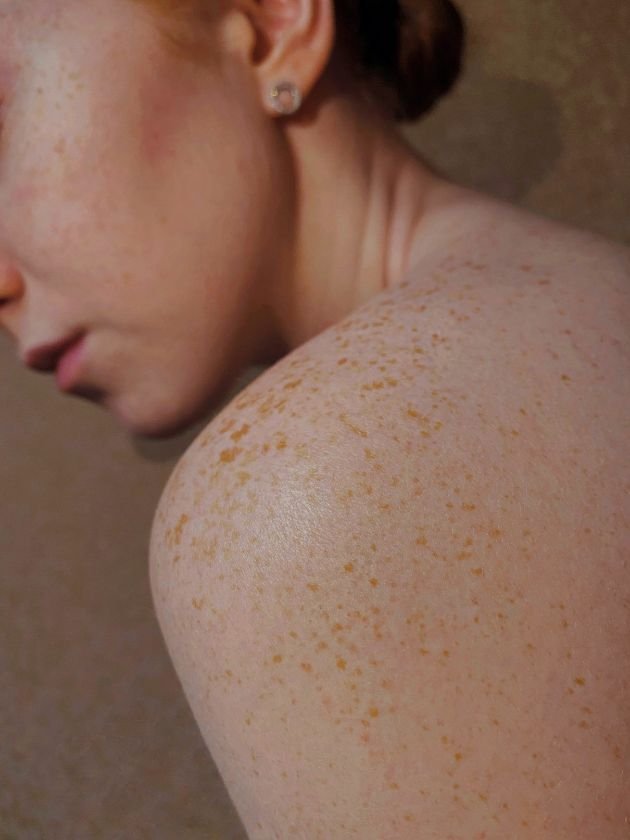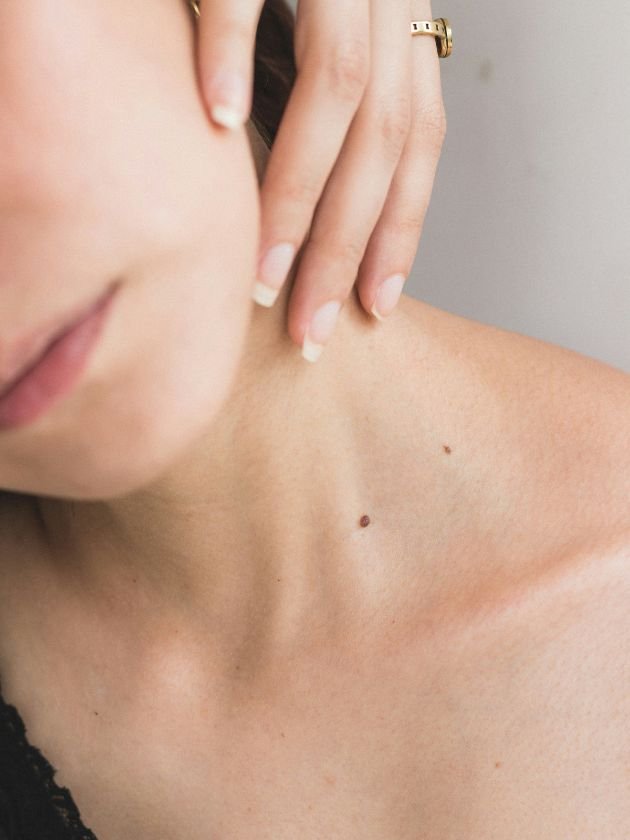12 Brilliant Ways to Identify Your Skin Type at Home
Identify Your Skin Type is the first and most crucial step for anyone looking to build an effective skincare routine. People who want to develop an appropriate skincare regimen should start by identifying their skin type. Determining the behavior of your skin provides the solution for managing persistent dryness along with unexpected breakouts and dullness conditions. Pretty much everything depends on your home-based discovery of your skin type since this information guides your selection of the optimal products and ingredients. When you lack awareness about your skin type, expensive skincare products will not yield satisfactory results.
How to Identify Your Skin Type
People who want to develop an appropriate skincare regimen should start by identifying their skin type. Determining the behavior of your skin provides the solution for managing persistent dryness along with unexpected breakouts and dullness conditions. Pretty much everything depends on your home-based discovery of your skin type since this information guides your selection of the optimal products and ingredients. When you lack awareness about your skin type, expensive skincare products will not yield satisfactory results.
Why Skin Type Varies
Skin type contains both hereditary elements together with inputs from climate conditions as well as stress levels, diet, and environmental influences. Hormonal changes together with aging processes as well as changes in your lifestyle can lead skin type to change over time. It becomes mandatory to review your skin’s conduct periodically because this assessment leads to better insights. The incorrect judgment of skin type by people through scattered symptoms or skincare reactions creates improper treatment that causes their skin conditions to deteriorate.
The Bare-Faced Test
In a brief yet reliable way, the bare-faced test determines your true skin type. Apply mild facial cleansers to start before beginning the assessment. Dry your skin thoroughly by patting it before letting the skin remain bare of products for an hour. Examine the properties of your skin by standing outside during the day. Dry skin usually results in tightness when touching the facial skin. The skin’s appearance on your forehead and nose can reveal your skin type as normal or combination if you see visible shine. A surface which feels greasy across the entire area indicates that your skin is naturally oily. The natural state of your skin becomes apparent after performing this evaluation.
Blotting Sheet Test
The use of blotting sheets offers a short method for determining your skin type. Apply the blotting sheet to various facial sections during the hours without cosmetic products. Ear marks of oil throughout the face indicate that you have an oily skin type. Combination skin can be identified by oily skin only present in the T-zone section of the face. The skin gets dry when there is no oil on it. A moderate and constant amount of oil indicates your skin falls into the normal category.

Morning Skin Check
Morning skin conditions usually reveal your skin type without any doubts. Oily skin shows itself when your facial appearance develops shine making you desire immediate washes. Dryness is usually present when your face feels tight or becomes flaky. A sensation of softness combined with calmness indicates that your skin belongs to the normal category. Redness together with irritation appear on the skin of those who have sensitive skin.
Sensitivity Response
No one has purely sensitive skin as characteristics of sensitivity occur within all skin types. Your skin classifies as sensitive based on rapid responses to new items, painful reactions when putting things on your face and persistent facial redness with irritation. A weakened barrier exists based on this response so choose non-reactive calming products to manage the issue.
Hydration Test
The condition of your skin hydration shows how dry it actually is. Feel a minimal patch on your cheek with your fingers then focus on the surface feel. A dehydrated skin will produce wrinkles when you pinch it and feel rough to the touch. Drinking enough water serves different purposes than normal oil production because people with dry skin lack both water and oil yet dehydrated people can still remain oily.
Check for Pore Size
Higher sebum production results in the typical appearance of enlarged pores because of their large size. Use mirror inspections to examine pores which typically appear in your nose and cheeks area. Large pores that appear on the skin surface mark signs of both oily and combination skin types. Dry or normal skin is typically indicated by small, hardly noticeable pores. Skin oil levels can be measured through the observation of pore size.
Makeup Behavior
Your skin type gets partially revealed by observing how makeup behaves while you are active throughout the day. Excess oil in your skin surfaces as foundation failure that occurs both in general areas and specifically in the T-zone area. Drying skin condition reveals itself when makeup neither sticks to surface regions nor separates from your skin. Healthy skin creates uniform wearing of bases on the surface.
Reaction to Weather Changes
Any skin which transforms from oily in warm conditions to dry during cold seasons exhibits either combination or normal skin type. The classification as dry skin happens when skin always stays parched no matter what the climate conditions are outside. The natural state of oily skin becomes more noticeable during hot weather conditions. Your skin demonstrates its ability to react or fail to react to environmental stressors through this behavior.

Touch and Feel Test
Use your fingertips to softly touch your face starting from one side to another. Dry skin characteristics become evident when you feel roughness together with flakes and tightness. Oily skin types produce surfaces which are either slick or slippery to the touch. The surface of normal skin remains supple but sensitive skin exhibits inflammation without any discoloration.
Observation After Exfoliation
When you use exfoliation your skin provides clues about various traits. After exfoliation dry skin tends to tighten excessively and sometimes develops peel. The skin of an oily complexion feels restored afterward but its natural oil production stays heightened. The skin of those with sensitivity demonstrates redness with stinging sensations but normal skin stays free from both color changes and textural variations after exfoliation.
Sebum Production Over Time
Track how oily your skin gets as the day progresses without applying any mattifying products. Frequent blotting or shine all over indicates oily skin. Shine limited to the forehead and nose usually suggests combination skin. A consistent matte finish throughout the day may point to dry or normal skin.
Skin Type Over Time
Observe your skin consistently for at least a week. Keep track of trends and responses to various settings and goods. Skin that varies throughout the day and week may be combination, while consistently oily or dry skin indicates a more defined type. Long-term observation is the most reliable method for identifying skin type.
Understanding Combination Skin
Combination skin presents traits of more than one skin type. Typically, the T-zone is oily while the cheeks remain dry or normal. Managing combination skin involves balancing care, using oil-controlling ingredients for the T-zone and hydrating ingredients elsewhere. One of the most prevalent skin types, it calls for adaptable care.

Managing Normal Skin
Normal skin types enjoy a balanced feel with no persistent dryness or oiliness. Pores are small, and the skin texture is smooth. While this skin type is low maintenance, consistent care is still essential to maintain its natural equilibrium. Lightweight moisturizers and gentle cleansers usually suffice.
Dealing with Oily Skin
Oily skin is characterized by an overproduction of sebum, leading to shine, clogged pores, and breakouts. Proper exfoliation and the use of oil-free, non-comedogenic products can help manage this condition. Clay masks and salicylic acid-based products are particularly effective for oily skin.
Treating Dry Skin
The skin with reduced oil content becomes rough along with tightness and develops flakiness. It may also appear dull. People with this skin type should use hydrating serums alongside luxurious moisturizers and using gentle cleansing products which protect their skin barrier. Hyaluronic acid together with ceramides should be among your ingredients search.
Caring for Sensitive Skin
The skin which presents sensitivity reacts without delay to both modifications in products in addition to temperature variations and other surrounding elements. The skin surface of these tendencies has the potential to become inflamed and turn red and experience burning sensations and stinging responses. Automated hypoallergenic products with calming ingredients like chamomile and aloe vera are necessary for people with sensitive skin. All new products need testing before use to prevent sensitivity outbreaks.
Final Thoughts
Mixing up identification of your skin type happens through observation as well as ongoing skincare practices. If you understand your skin condition based on dry, oily, combination, sensitive or normal characteristics then you can better develop an optimal skincare routine. The 12 shared methods enable you to identify your correct skin type so you can create a skincare program that serves your particular needs. Your ability to assist skin health alongside its resilience and natural shine increases when you develop deeper awareness about your skin condition.

